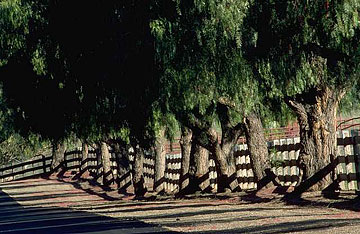- Home
- Learn about salinity
- Get to know your site
- Design a landscape
- Solve a problem
- Other information
Salinity Management Guide

Why is soil salinity of concern in arid and semi-arid regions?
In humid regions, soils typically contain little or no salt, and soil water is relatively low in salt-related dissolved ions. That's because abundant rainfall (and, in some areas, abundant snowmelt) leaches any salt present in soil and transports salt-related ions downward, past the root zone.
In arid and semi-arid regions, on the other hand, the concentration of salt-related ions in both water and soil tends to be moderate or relatively high. Water and soil salinity are higher in arid regions because of two factors:
- The rate of chemical weathering of earth materials, such as soils, minerals, and rocks, is relatively high, resulting in the accumulation of various natural salts.
- The rate at which water is lost to the atmosphere through evaporation from soils and transpiration by plants — processes collectively known as evapotranspiration — is relatively high.
The rate of chemical weathering is higher for arid and semi-arid areas than for humid areas because the temperatures of air and soil are higher. Evapotranspiration rates in arid and semi-arid regions exceed those of humid regions because the solar radiation in the former is greater and the air there is drier.
Native plants in the southwest have adapted to the weather, water, and soil conditions of arid or semi-arid terrain. Many of the plants popular for urban landscapes in the Southwest have not adapted, however; those plants typically require irrigation. Salt-derived ions present in irrigation water and in soil thus become an important consideration in landscape design and maintenance, because they can affect the performance of landscape plants. High levels of such ions may, for instance, impede the germination, growth, or reproduction of certain plants.
| « Previous page | Next page » |